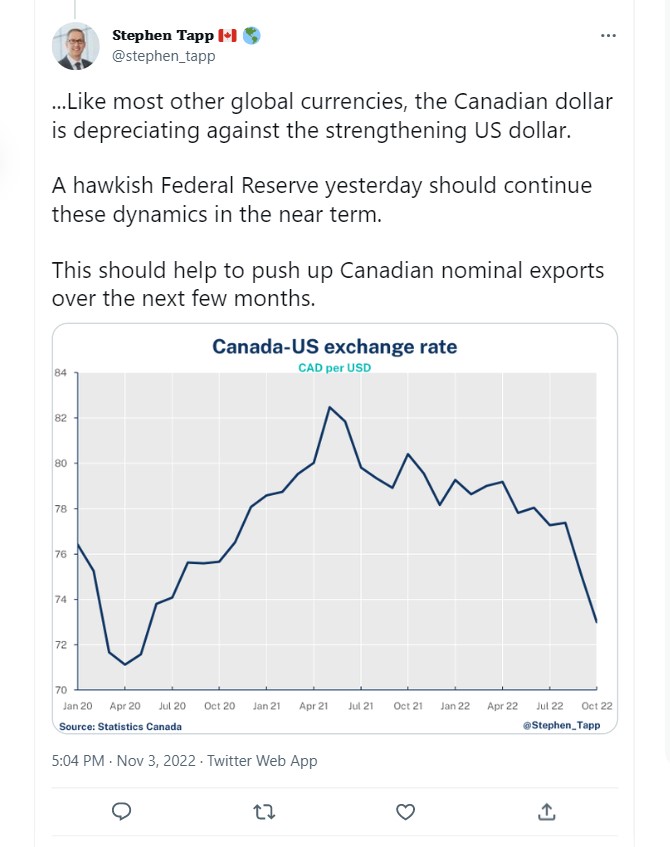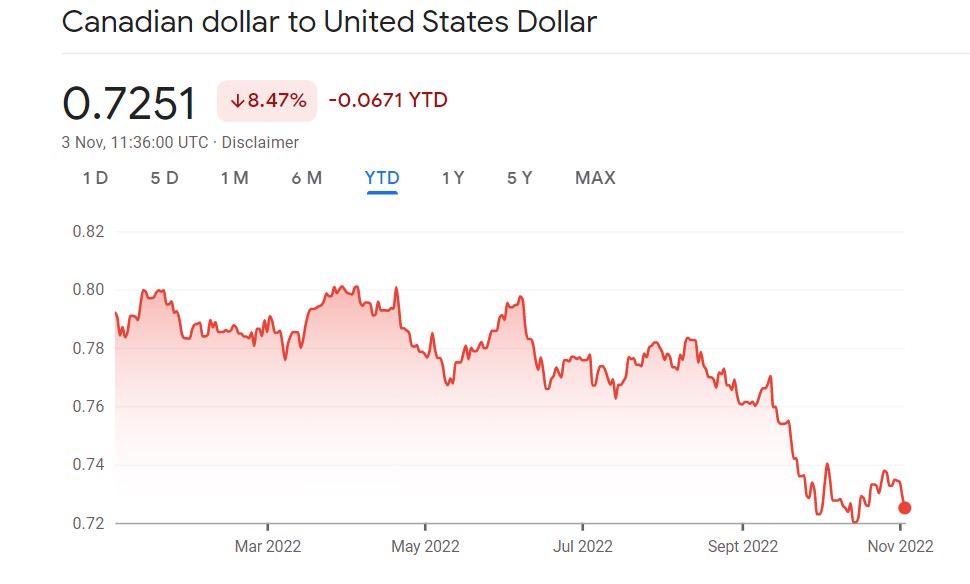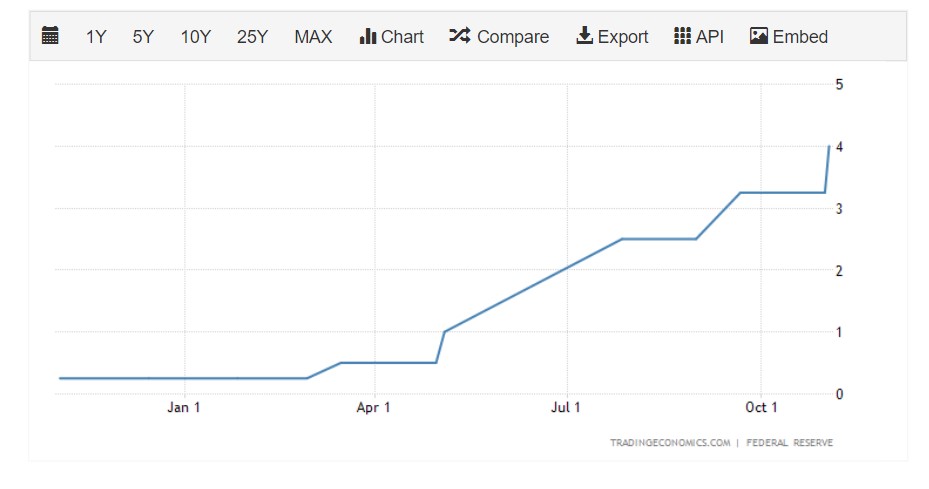Key Takeaways:
- Canadian Dollar has slid over 8% against the USD in 2022
- The US Federal Reserve raised its benchmark interest rate by 75 basis points
- In Contrast, Canada increased its benchmark interest rate by 50 basis points to 3.75%.

YEREVAN (CoinChapter.com) — The Canadian Dollar (CAD) continues to weaken against the USD. The fall is fueled by the continuous key interest rate hike by the US Federal Reserve. On Wednesday, the FED raised its benchmark interest rate by 75 basis points, to a target range of 3.75%-4%. This is the highest level since January 2008.
In contrast, the Bank of Canada has failed to raise its interest rate as much as expected. Last week, Canada increased its benchmark interest rate by 50 basis points to 3.75%. This fell short of the 75 points that some economists and investors were anticipating. However, the sixth consecutive rate hike is one of the fastest monetary policy-tightening cycles in its history.

Raising interest rates helps fight inflation as it compels citizens to borrow and spend less, thus decreasing demand. When the demand for goods and services falls, so do their rates.
Canadian dollar’s fall to spell trouble for food prices
The continued weakening of the Canadian Dollar comes as a further blow to consumers and businesses already reeling under inflation and higher borrowing costs.
Year to date, the Canadian Dollar has fallen over 8% against the United States Dollar, according to Google Finance. Over 6% of that fall comes between 12th September 2022 and 14 October 2022.

CAD closed at 0.73 against the USD during the last trading session. At the time of writing, it has fallen further to a little above 0.72 against its southern neighbor.
The growing inflation has already impacted the living standards of ordinary Canadians. Food prices have gone up, rendering many unable to afford necessities.
The annual report from Food Banks Canada claimed there were nearly 1.5 million visits to food banks in March. This is 15% more than the same month last year and 35%more than in March 2019, before the pandemic struck.
A survey from September by the Canadian Hub for Applied and Social Research at the University of Saskatchewan suggested 20% of Canadians were reducing meal sizes or skipping meals to save money.
Economists predict that the upcoming winter will be even harder. According to Mike von Massow, a food economist with the University of Guelph, the falling Canadian Dollar will make food imports from the US more expensive.
“Those things that we get fresh in the winter from the US […] were going to be more expensive anyway, and so this just bumps it more. So, we’ve seen quite high levels of food inflation in the last year, and I think for those products, that inflation will continue,”
Canada-based CityNews quoted Massow saying.
Recommended: Turkish Central Bank Slashes Interest Rates Again Amid 83% Inflation
US Federal Reserve to slow down interest rate hike
The United States Federal Reserve raised interest rates by three-quarters of a percentage point again on Wednesday. This is the fourth consecutive 0.75 percentage point increase this year.
Since the start of 2022, the Fed has increased its interest rate six times. The current federal interest rate stands at a range of 3.75% to 4%. However, the US Central Bank expects that number to go up from 4.5% to 4.75% in 2023.
Meanwhile, Goldman Sachs economists predict that the Fed will increase its benchmark rate to as high as 5% by March 2023. Inflation in the US closed at 8.2% in September, with October numbers expected to be higher. That is above the Central Bank’s target inflation rate of 2%.

Fed Chair Jerome Powell indicated that the federal funds rate increases will continue to battle inflation. However, he also indicated that further hikes will not be at such a high rate.
The Federal Open Market Committee (FOMC) also released a statement confirming further increases ahead.
“The Committee anticipates that ongoing increases in the target range will be appropriate in order to attain a stance of monetary policy that is sufficiently restrictive to return inflation to 2 percent over time,”
the FOMC said in a statement.
With more federal reserve interest rate hikes on the chart, the Canadian Dollar will take further blows, causing more worries for the inflation-hit Canadians.


